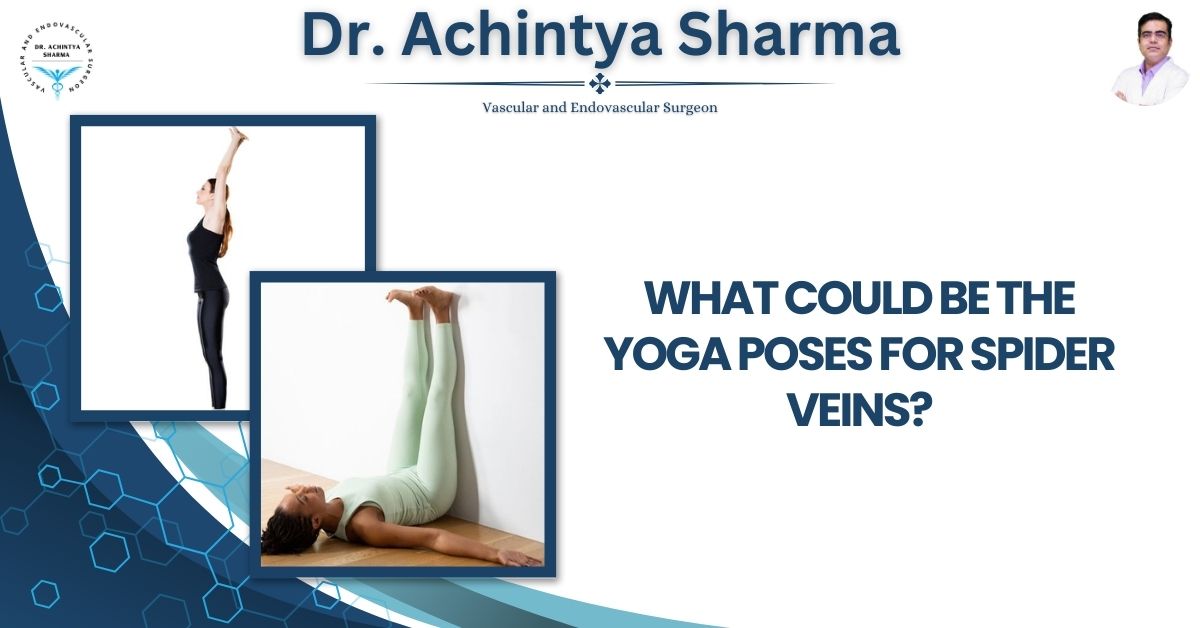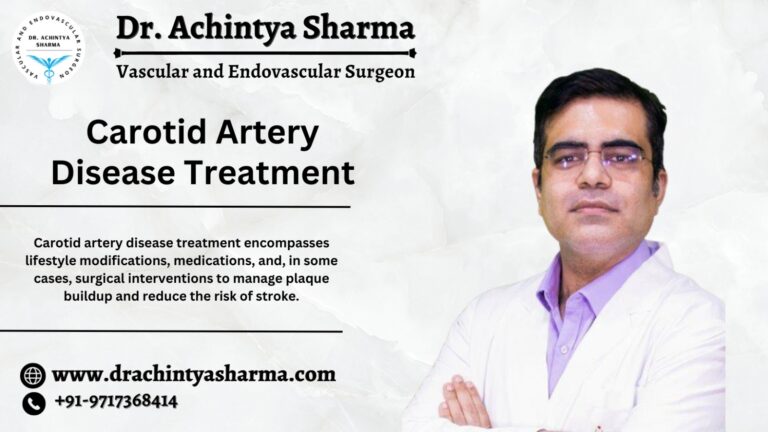Spider veins, also known as telangiectasia, are small, twisted veins that appear beneath the skin’s surface, often forming web-like patterns. They commonly develop on the legs and face due to weakened blood vessels, poor circulation, or increased pressure in the veins. Factors such as genetics, prolonged standing, obesity, hormonal changes, and aging contribute to their formation. While spider veins are usually harmless, they may cause discomfort like itching, burning, or mild pain. If ignored, they may gradually become more severe. Fortunately, yoga for spider veins is a natural way to improve circulation, strengthen veins, and minimize their appearance. Doctors suggest using yoga as part of a holistic approach to vein health.
Signs of Poor Circulation
Poor circulation can lead to spider veins and other vein-related issues. Take this quick self-test to assess your risk:
-
- Do you often experience cold feet or hands?
-
- Do your legs feel heavy or swollen by the end of the day?
-
- Do you notice tingling or numbness in your limbs?
-
- Do you have visible veins or discoloration on your legs?
-
- Do you experience nighttime leg cramps frequently?
If you answered ‘yes’ to any of these, you may have circulation issues. Practicing yoga for spider veins can help improve blood flow and support vein health.
How Yoga Helps with Spider Veins
Yoga for spider veins enhances circulation, strengthens veins, and reduces pressure on the legs. It also promotes relaxation, helping to alleviate stress-related vein issues. Here are some easy yoga poses to incorporate into your routine.
Effective Yoga Poses for Spider Veins
1. Legs Up the Wall (Viparita Karani)
Procedure:
- Sit close to a wall and lie back.
- Extend your legs upward against the wall.
- Keep your arms relaxed at your sides.
- Hold for 5–10 minutes while breathing deeply.
Benefits: Enhances circulation, reduces swelling, and relieves leg fatigue.
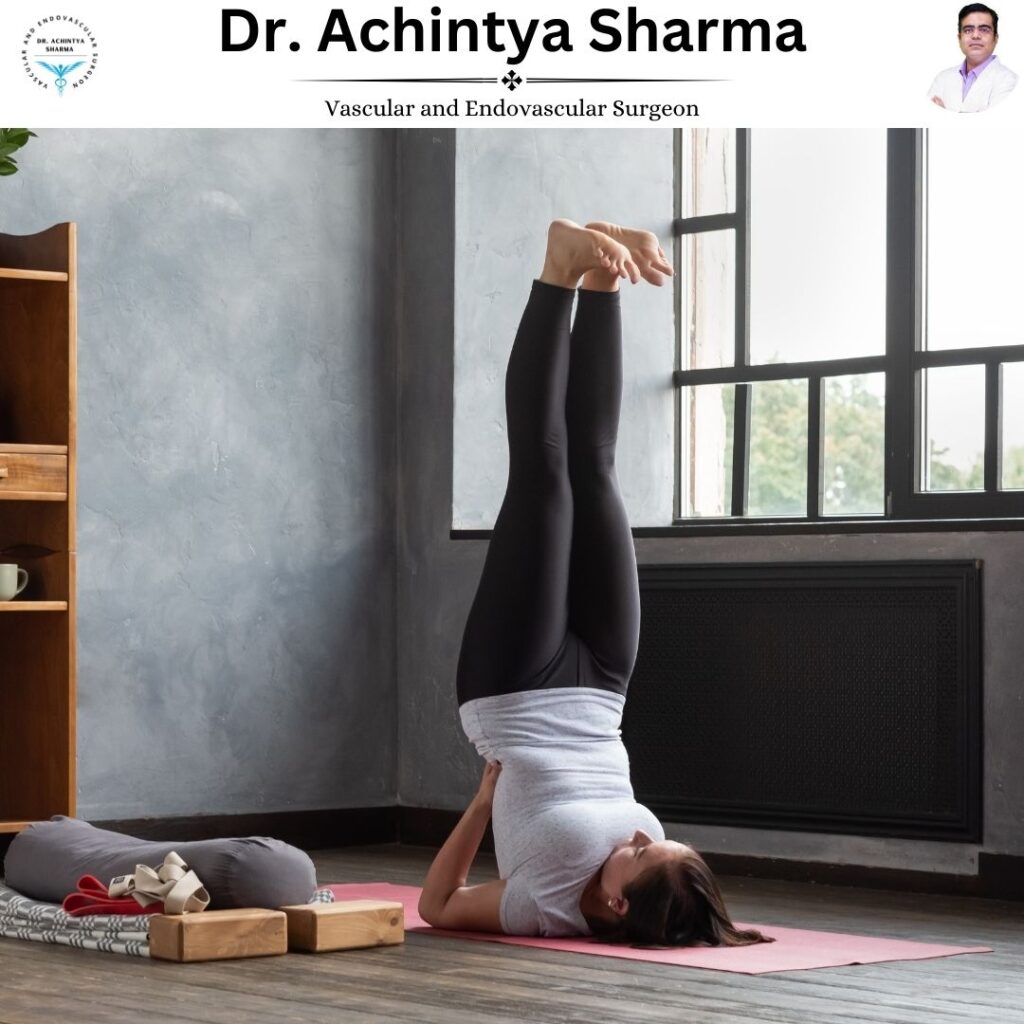
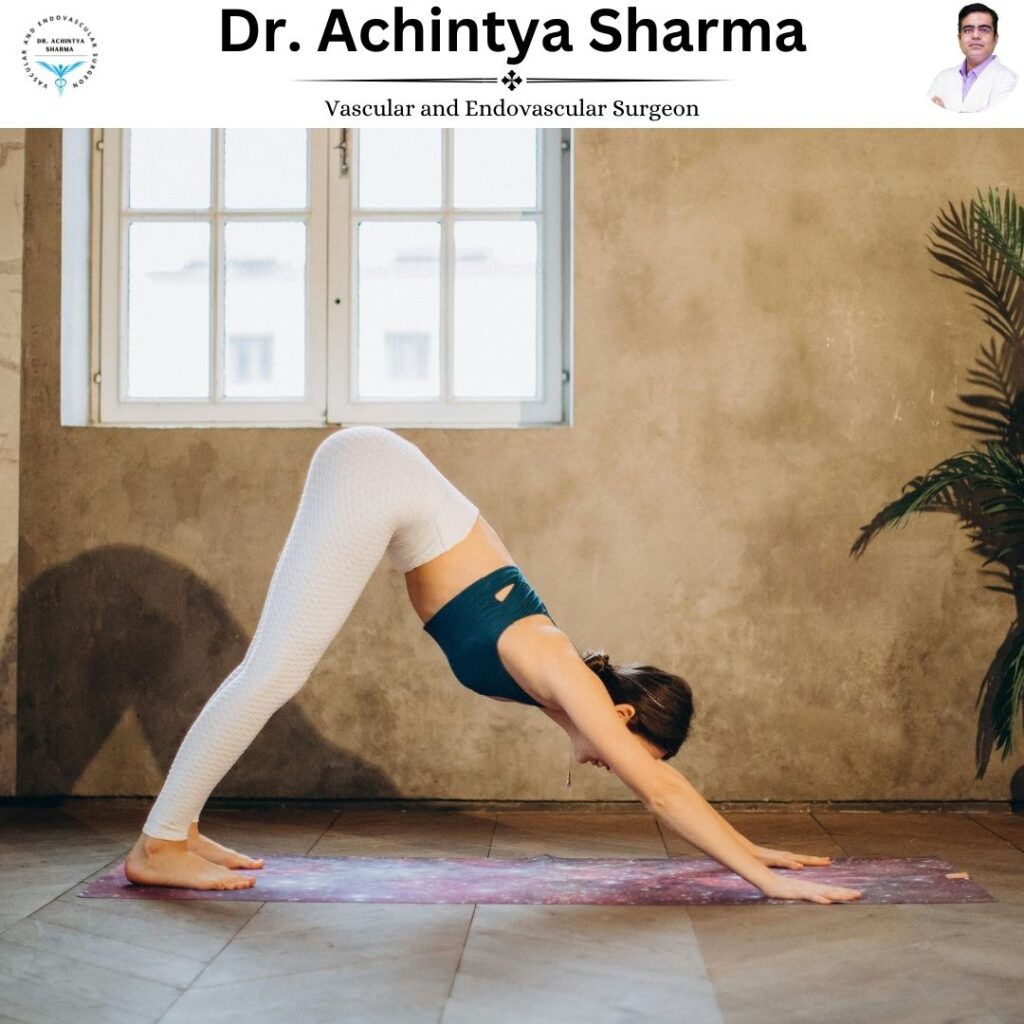
2. Downward Dog (Adho Mukha Svanasana)
Procedure:
- Start on your hands and knees.
- Raise your hips upward while extending your legs straight.
- Press your heels down and hold for 30 seconds.
- Repeat 2–3 times.
Benefits: Improves blood flow and strengthens the lower body.
3. Mountain Pose (Tadasana)
Procedure:
- Stand straight with your feet together.
- Engage your thighs and lift your chest.
- Breathe deeply and hold for 1 minute.
Benefits: Improves posture and promotes circulation.
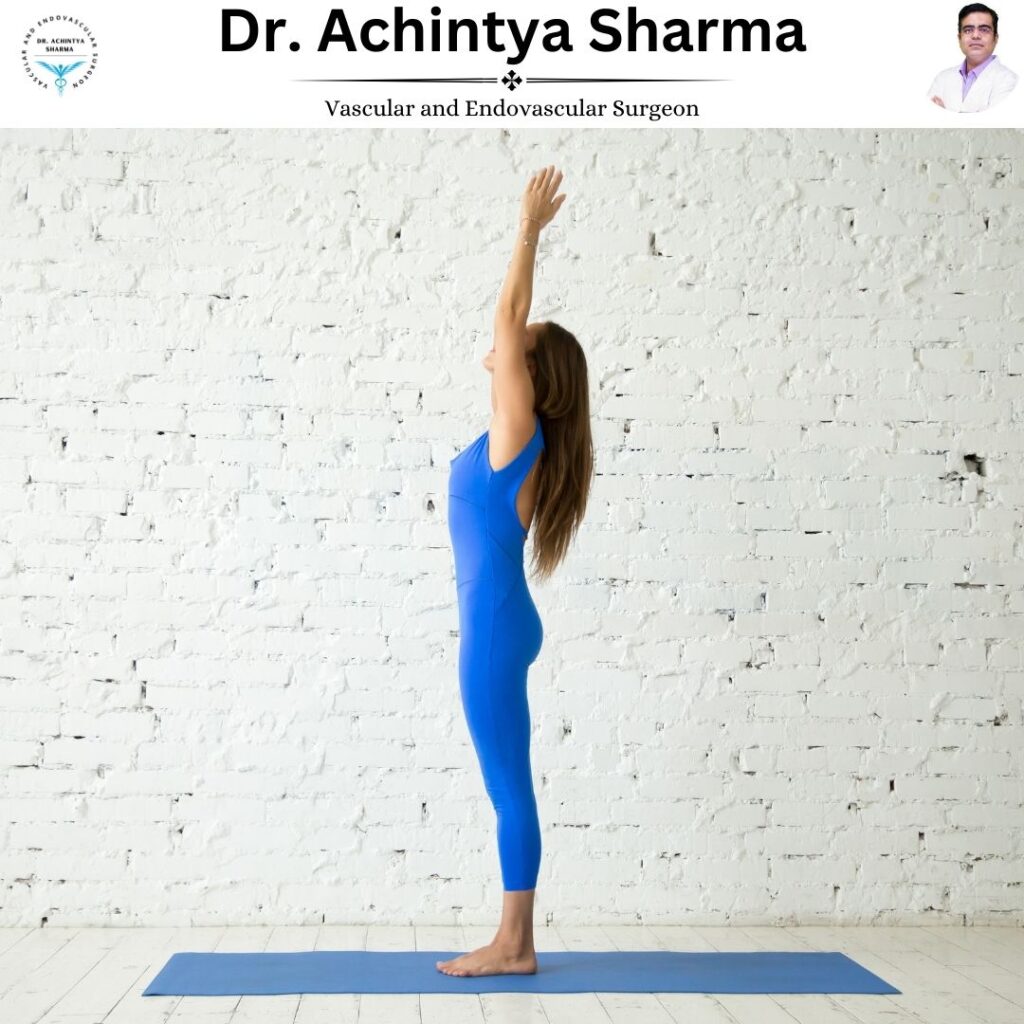
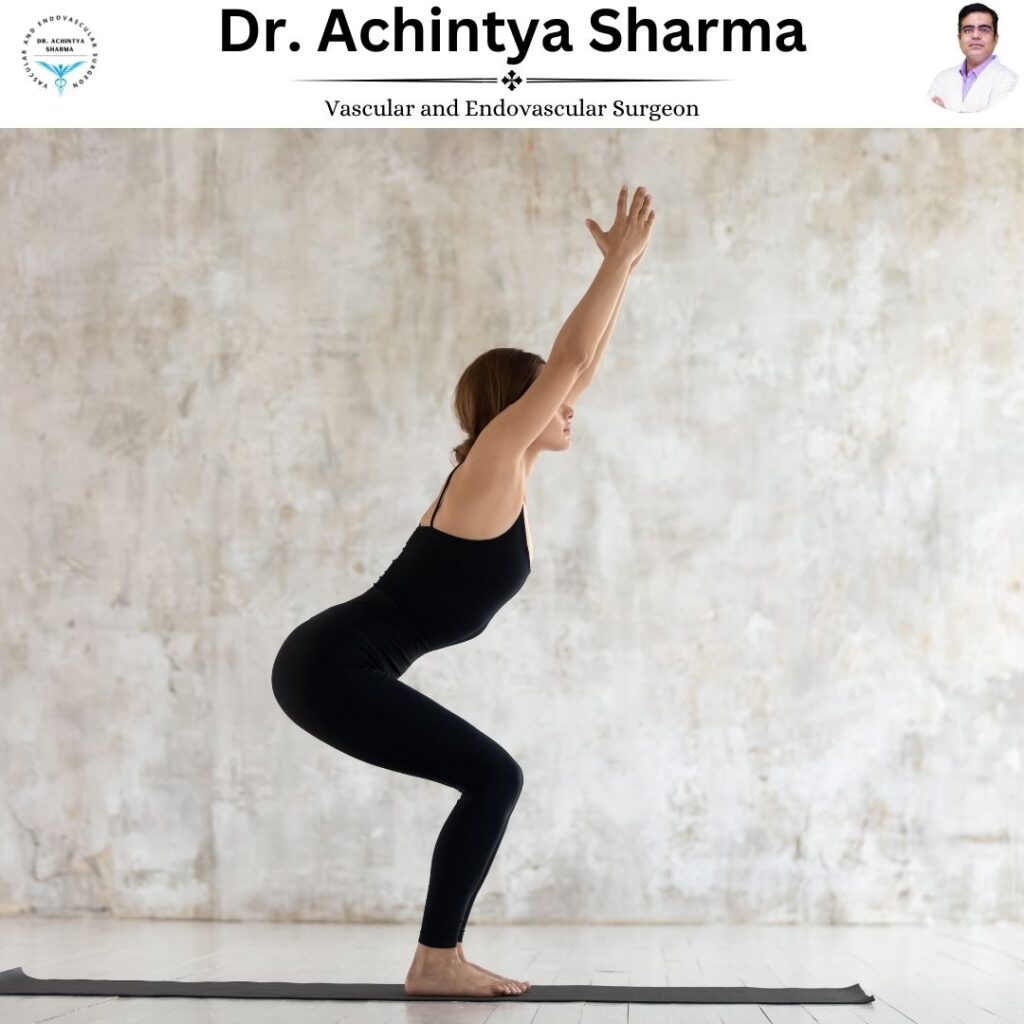
4. Chair Pose (Utkatasana)
Procedure:
- Stand with feet hip-width apart.
- Lower your hips and bend your knees as if you’re sitting on a chair.
- Hold for 30 seconds and repeat 2–3 times.
Benefits: Strengthens leg muscles and enhances circulation.
5. Butterfly Pose (Baddha Konasana)
Procedure:
- Sit with your knees bent outward and the soles of your feet touching.
- Grip your feet and softly push your knees down toward the floor.
- Hold for 30 seconds while breathing deeply.
Benefits: Increases blood flow to the legs and relieves tension.
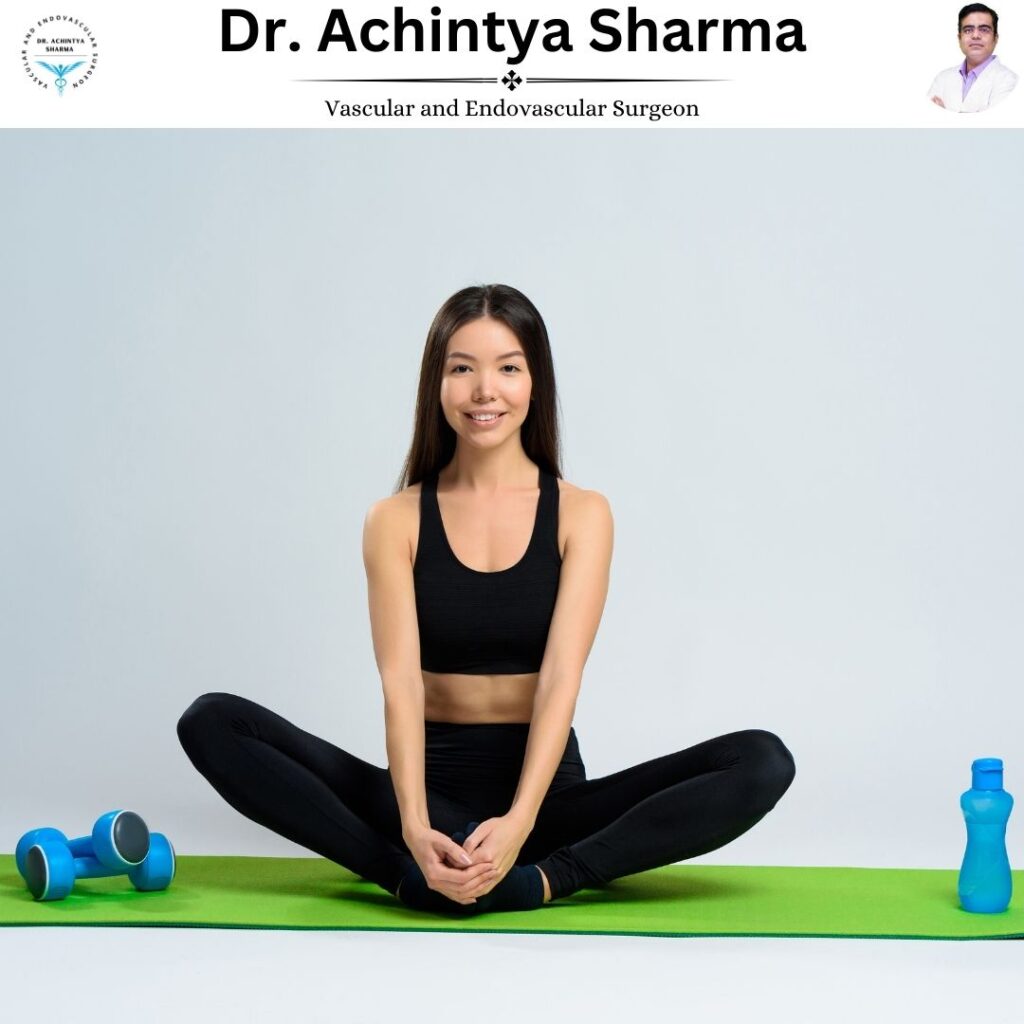
Other Natural Remedies for Spider Veins
- Regular Exercise – Walking, swimming, and cycling improve blood flow and reduce vein pressure.
- Massage – Gentle leg massage boosts circulation and prevents blood pooling.
- Herbal Remedies – Horse chestnut extract and grape seed extract help strengthen veins.
- Compression Stockings – Wearing compression stockings improves circulation and reduces swelling.
- Healthy Diet – Eating foods rich in antioxidants, such as berries and leafy greens, supports vein health.
Expert Advice from Dr. Achintya Sharma
Dr. Achintya Sharma suggests taking a holistic approach for long-term benefits. He recommends combining yoga for spider veins with a balanced diet, hydration, and regular movement to maintain optimal vein health. Following these natural remedies consistently can help reduce discomfort and improve circulation. These Yoga for spider veins is an effective way to manage symptoms naturally.
Conclusion
If you’re noticing spider veins and wondering how to manage them naturally, incorporating yoga for spider veins into your daily routine can be a great solution. Regular practice of these simple poses can enhance circulation, reduce discomfort, and support vein health. Additionally, a combination of exercise, massage, herbal treatments, and a healthy diet can further improve results.
Take the First Step Towards Healthier Veins
Try a 7-day yoga for spider veins challenge and experience the benefits yourself! Share your progress or ask questions in the comments—we’d love to hear about your journey! Dr. Achintya Sharma encourages a proactive approach to vein health.

